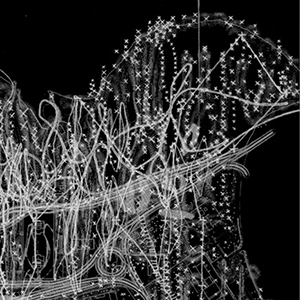The parti concept in crisis
Transformations in the didactics of the architectural project at the turn of the millennium
DOI:
https://doi.org/10.35305/23626097v9i17.386Keywords:
Architecture, project, parti, process, didacticsAbstract
In recent years, the discourse on the architectural project –at least in certain groups of architects in Buenos Aires– have begun to step out of the enunciation of a parti idea, just as it could be expected until then. This means that it has no longer been interesting for architects to explain, in a few words and with a synthetic sketch, the initial totalizing idea –the parti– to which all the design decisions responded. The present discourse has moved towards the narration of the design process, which is usually neither a priori nor idealistic, i.e., it has left behind the features underlying the notion of parti. From a historical perspective, this article aims to examine some changes in the project culture through the review of certain academic experiences that took place in the Faculty of Architecture, Design and Urbanism of the University of Buenos Aires at the turn of the millennium. It is argued that the crisis of the parti idea is due to several factors: the criticism of an established project didactics, the conditions of architectural production in Argentina, the wider changes in sensitivity arising after the postmodern criticism as well as the technological advances linked to information technology which, in turn, have been disrupting the design practice.
Downloads
Metrics
References
Aliata, F. (2006, septiembre). Lógicas proyectuales. Partido y sistema en la evolución de la arquitectura contemporánea en la Argentina. En Aliata, F. (2013). Estrategias proyectuales. Los géneros del proyecto moderno. Buenos Aires, Argentina: Diseño.
Baliero, H. (1984). Taller Baliero. Propuesta. Recuperado de: http://www.tallerbaliero.com.ar/
Bourdieu, P. (2010). El sentido social del gusto. Elementos para una sociología de la cultura. Buenos Aires, Argentina: Siglo XXI.
Castillo, M. de la P. (2019). Referente y proyecto arquitectónico. Arquisur Revista, 9(16), 82-93. Recuperado de: https://doi.org/10.14409/ar.v9i16.8106
Corti, M. y Vekstein, C. (2005, abril). La mano de Dios. Experimentación arquitectónica, integración del cuerpo y estética particularista en la obra de Claudio Vekstein. Café de las Ciudades, 30. Recuperado de: http://www.cafedelasciudades.com.ar/arquitectura_30.htm
Delecave, J. (2020). ¿Cuál La Escuelita? Silencio, fragmentación y denuncia en los talleres de Ernesto Katzenstein, Francisco Liernur y Eduardo Leston (1977-1981). Registros. Revista De Investigación Histórica, 16(2), 124-150. Recuperado de: https://revistasfaud.mdp.edu.ar/registros/article/view/452
Díaz, A., Katzenstein, E., Solsona, J. y Viñoly, R. (1981). La Escuelita. 5 Años de enseñanza alternativa de arquitectura en la Argentina 1976/1981. Buenos Aires, Argentina: Espacio Editora.
Díaz, A. (1987). Textos de Arquitectura. Buenos Aires, Argentina: CP 67.
Fernández, R. (1981). La escuela de Buenos Aires. Dos Puntos, (1), 10-18.
Frampton, K. (1981). Du néo-productivisme au post-modernisme. L’Architecture d’Aujourd’hui, 213, 2-7.
Frampton, K. (1990). Rappel à l’ordre: the case for the tectonic. Architectural Design, 60(3-4), 19-25.
Jacubovich, A. y Molina y Vedia, J. (2006, septiembre 1). Entrevista al arquitecto Ariel Jacubovich. Archivos DAR - FADU UBA, Buenos Aires. Recuperado de: http://www.archivosdar.com.ar/entrevistas/jacubovich.html
Kogan, C. (2017). El diseño como colección intencionada de arquitectura: el proyecto en los talleres que Tony Díaz dirigió en La Escuelita y en la nueva FADU (1976-1987). Estudios Del Hábitat, 15(1), 1-24.
Kogan, C. A. (2020). Explorando otras posibilidades para la práctica proyectual: Notas sobre los Talleres Experimentales Proyectuales (Buenos Aires, 1992-1999). Registros. Revista De Investigación Histórica, 16(2), 151-175. Recuperado de: https://revistasfaud.mdp.edu.ar/registros/article/view/478
Krauss, R. (1985). La originalidad de la vanguardia y otros mitos modernos. Madrid, España: Alianza Editorial.
Lewkowicz, I. y Sztulwark, P. (2003). Arquitectura plus de sentido. Buenos Aires, Argentina: Altamira.
Liernur, J. F. (2001). Arquitectura en la Argentina del siglo XX. La construcción de la modernidad. Buenos Aires, Argentina: Fondo Nacional de las Artes.
Liernur, J. F. (2004). Contemporánea (Arquitectura). En Aliata, F. y Liernur, J. F. (Comp.) Diccionario de Arquitectura en la Argentina, vol. c|d. Buenos Aires, Argentina: Clarín Arquitectura - Agea.
Schere, R. (2008). Concursos 1825-2006. Buenos Aires, Argentina: SCA.
Silvestri, G. (2008). Arquitectura argentina: las palabras y las cosas. Punto de Vista, 90.
Sztulwark, P. (2015). Componerse con el mundo. Modos de pensamiento proyectual. Buenos Aires, Argentina: SCA/Diseño.
Van Zanten, D. (1978). El sistema de Beaux Arts. Architectural Design, 48, 11-12.
Viñoly, R. (1999). Katzenstein y el Valor del Fragmento. En I. Katzenstein (Ed), Ernesto Katzenstein arquitecto (13-17). Buenos Aires, Argentina: Fondo Nacional de las Artes.

Published
How to Cite
Issue
Section
License
Open access policy
A&P Continuidad is a non-profit and open access publication. According to Mexico Declaration on Cultural Policies, the journal distribution is submitted to Creative Commons Attribution-Noncommercial-ShareAlike 4.0 International Public License (CC BY-NC-SA). “Neither the commercial use of the original work nor that of the possible derivative works are allowed. The distribution of derivative works should be submitted to the license regulating the original work. This license is not free.”
A&P Continuidad authorizes the partial or full reproduction of texts and graphs provided that the source is cited. Authors are exclusively responsible for the criteria expressed in the articles which do not necessarily reflect the opinion of the Editorial Committee or that of the Direction Board. The copyright of the published articles pertains to their authors or publishers.
Transfer of rights
The acceptance of an article to be published implies the author’s transfer of rights to the journal. Authors continue to have the right to use the material in future books or publications, approve or veto the republication of their works as well as the rights related to patents or other rights. Transfer of rights form may be downloaded here.























 This OJS site and its metadata are under a
This OJS site and its metadata are under a 

